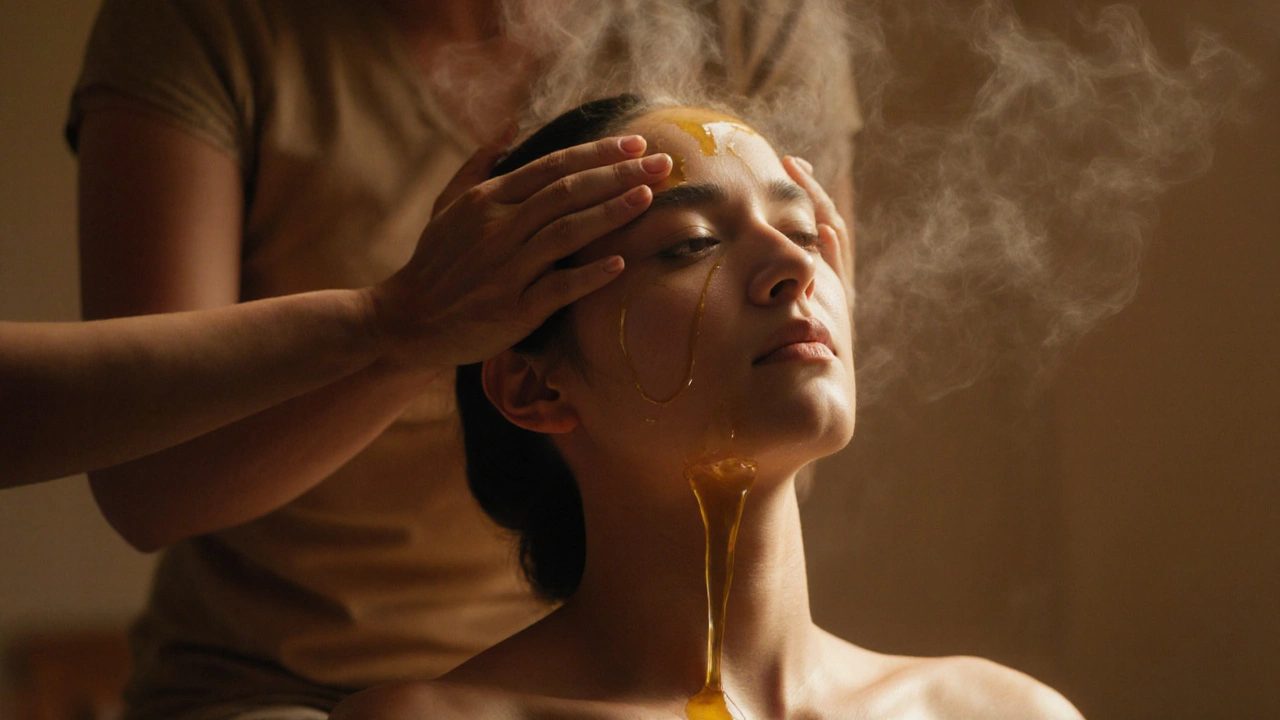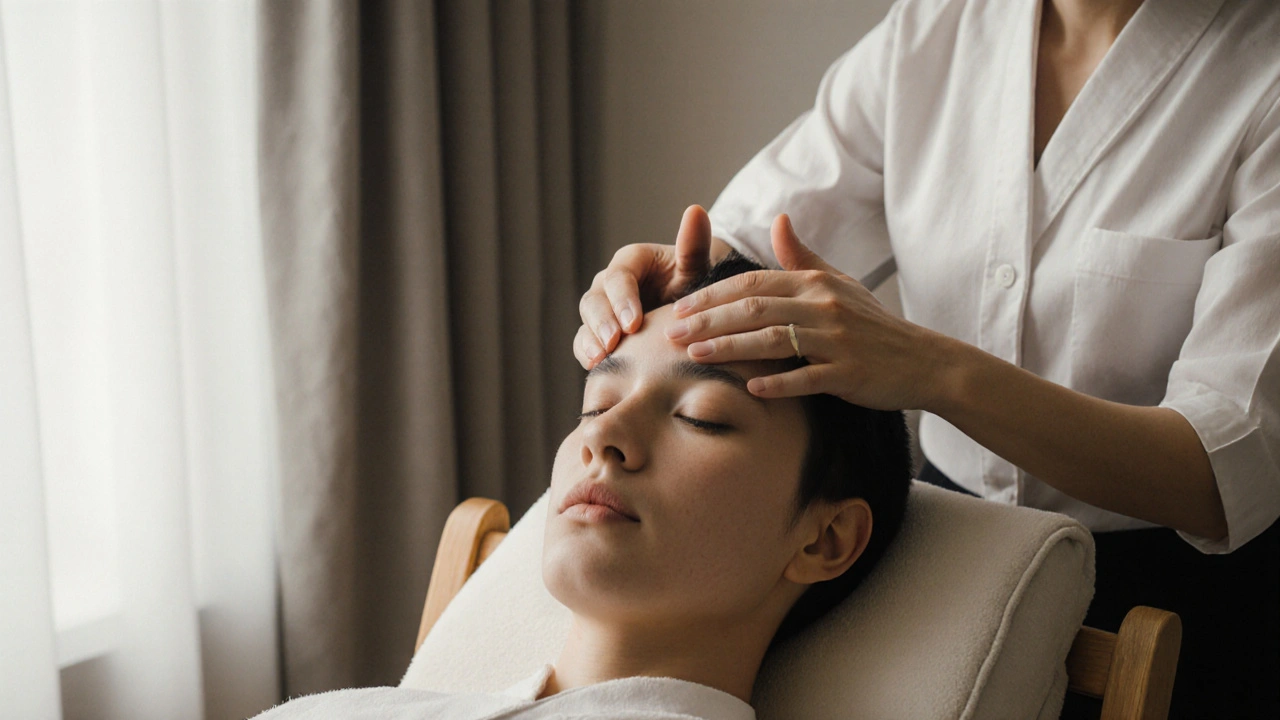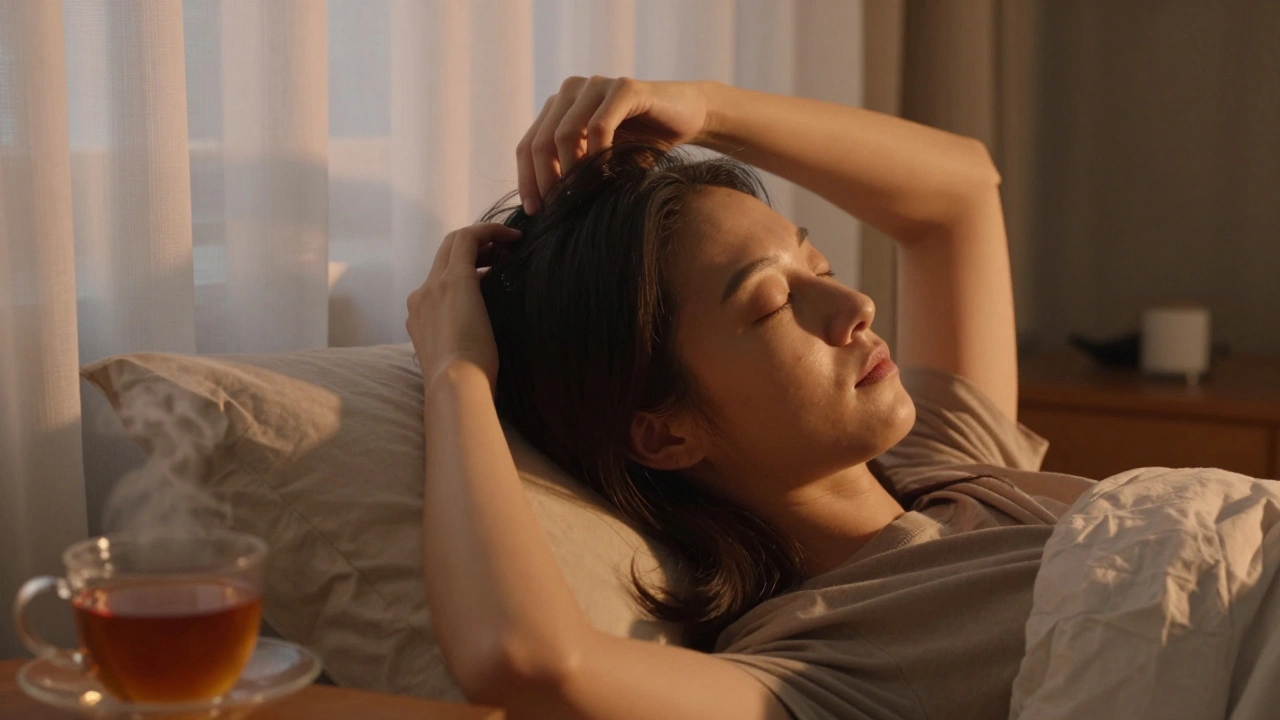How to Choose the Right Head Massage Technique for You

You’ve had a long day. Your shoulders are tight, your eyes feel heavy, and that dull ache behind your forehead won’t go away. You think about a massage-but not just any massage. You want something that targets the tension right at the top of your head. That’s where head massage comes in. But here’s the thing: not all head massages are the same. Some feel like a gentle scalp stroke. Others feel like a deep tissue reset for your skull. So how do you pick the one that actually works for you?
What Exactly Is a Head Massage?
A head massage isn’t just rubbing your temples. It’s a targeted technique that works on the scalp, neck, jaw, and sometimes even the ears. It’s been used for thousands of years-from Ayurvedic traditions in India to Japanese shiatsu and Chinese acupressure. Unlike full-body massages, head massages focus on pressure points that connect to your nervous system, blood flow, and even your mood.
Think of your head as a control center. Tension there doesn’t just stay in your scalp. It pulls down into your neck, triggers headaches, and even messes with your sleep. A good head massage doesn’t just feel nice-it rewires how your body handles stress.
Why Try a Head Massage?
Let’s be real: most people try head massage because they have tension headaches. But the benefits go way beyond that.
- Reduces migraine frequency-A 2023 study in the Journal of Clinical Medicine found that participants who got weekly head massages for eight weeks reported 40% fewer migraines.
- Improves sleep-Stimulating the occipital nerve and scalp pressure points helps lower cortisol levels. That means you fall asleep faster and stay asleep longer.
- Boosts hair health-Increased blood flow to the scalp delivers more oxygen and nutrients. People who get regular head massages notice less shedding and stronger roots.
- Relieves jaw clenching-If you grind your teeth at night, your masseter muscles are probably locked tight. A head massage that includes jaw release can ease that pain fast.
- Clears mental fog-After a long meeting or screen session, your brain feels stuck. A 10-minute scalp rub can reset your focus like a reboot button.
It’s not magic. It’s biology. And it works-even if you’ve tried everything else.
The Main Types of Head Massage Techniques
Not all head massages are created equal. Here are the five most common styles you’ll run into-and who they’re best for.
1. Ayurvedic Scalp Massage (Shiroabhyanga)
This is the classic Indian technique. Warm herbal oils (like coconut, sesame, or brahmi) are poured onto the scalp and massaged in slow, circular motions. It’s slow, soothing, and deeply nourishing.
Best for: People with dry scalp, stress-induced hair loss, or chronic anxiety. If you love slow, ritualistic relaxation, this is your match.
2. Shiatsu Head Massage
Originating from Japan, shiatsu uses finger pressure on specific points along energy channels (meridians). You’ll feel firm, deliberate pressure on your forehead, behind the ears, and at the base of the skull.
Best for: Those with tension headaches, sinus pressure, or neck stiffness. If you like deep pressure and want something that feels like a reset, go here.
3. Swedish Head Massage
Think light strokes, gentle kneading, and effleurage (gliding motions). It’s the most relaxing version-no oils, no pressure points, just soft, rhythmic touch.
Best for: Beginners, people sensitive to pressure, or anyone who just wants to unwind without intensity. Perfect if you’re new to massage or work in a high-stress job.
4. Acupressure Head Massage
Based on traditional Chinese medicine, this targets key points like GB20 (back of the skull), LI4 (between thumb and index finger), and Yintang (between the eyebrows). Pressure is applied for 10-30 seconds per point.
Best for: People with chronic migraines, dizziness, or eye strain from screens. It’s precise, clinical, and surprisingly effective.
5. Thai Head Massage
This combines acupressure with gentle stretching. You’ll sit upright while the therapist works on your scalp, shoulders, neck, and arms. It’s more active than other types-sometimes you’ll feel your head gently pulled or rotated.
Best for: Those with stiff necks, poor posture, or desk-job fatigue. If you’ve ever woken up with your neck locked, this one’s a game-changer.
How to Pick the Right One for You
Here’s a simple decision tree to help you choose:
- Do you have pain or pressure in your head? → Go for Shiatsu or Acupressure.
- Do you feel mentally drained or foggy? → Try Swedish or Ayurvedic for calm.
- Is your neck tight or your posture slumped? → Thai massage will fix that.
- Do you want to improve hair growth or scalp health? → Ayurvedic with warm oil is your best bet.
- Are you new to massage or sensitive to pressure? → Start with Swedish.
Still unsure? Try this: book a 15-minute trial of two different styles. Most spas offer mini-sessions. You’ll feel the difference immediately.

What to Expect During a Session
You’ll usually sit in a comfortable chair, fully clothed. No need to undress. The therapist will start at your temples, then move to your scalp, neck, and jaw. Some techniques use oils, others use just hands. You might hear soft music, or just silence.
During a good session, you’ll feel:
- A wave of warmth spreading from your scalp down your neck
- Your jaw slowly unclenching
- Your breathing getting deeper
- Your thoughts slowing down
It’s not supposed to be ticklish or painful. If it hurts, speak up. A skilled therapist will adjust pressure instantly.
Most sessions last 20-45 minutes. You’ll leave feeling lighter-not just in your head, but in your whole body.
How to Find a Good Head Massage Practitioner
You don’t need a fancy spa. But you do need someone trained.
Look for:
- Certifications in Ayurveda, Shiatsu, or Thai Massage
- Reviews mentioning “head,” “scalp,” or “tension relief” specifically
- Therapists who ask about your symptoms before starting
Avoid places that only offer “head massage” as an add-on to a full-body session. That’s not the same thing. You want someone who specializes in head and neck work.
Try searching for “certified shiatsu therapist near me” or “Ayurvedic head massage specialist.” Local wellness centers, yoga studios, and holistic clinics often have the best practitioners.
Head Massage vs. Scalp Massage: What’s the Difference?
People use these terms interchangeably-but they’re not the same.
| Feature | Head Massage | Scalp Massage |
|---|---|---|
| Area Covered | Scalp, temples, neck, jaw, ears | Scalp only |
| Pressure Level | Varies-can be deep or light | Usually light to medium |
| Primary Goal | Relieve tension, headaches, stress | Improve circulation, hair growth |
| Techniques Used | Shiatsu, acupressure, Thai, Ayurvedic | Circular rubbing, fingertip tapping |
| Best For | Chronic pain, stress, insomnia | Thinning hair, dry scalp |
If you’re dealing with headaches or stiff necks, go for head massage. If you’re focused on hair thickness, scalp massage alone might be enough.

Can You Do It Yourself?
Yes-and you should. Daily self-massage takes five minutes and costs nothing.
Try this routine:
- Use your fingertips to press in small circles on your scalp-start at the forehead, move back to the crown, then down to the neck.
- Pinch gently between your thumb and fingers along your hairline.
- Use your knuckles to rub the base of your skull where it meets your neck.
- Press the point between your eyebrows for 15 seconds. Breathe deeply.
Do this while brushing your teeth, waiting for coffee, or before bed. It adds up.
Frequently Asked Questions
How often should I get a head massage?
For general stress relief, once a week is ideal. If you have chronic headaches or tension, twice a week for 4-6 weeks then taper off works best. For hair health, 2-3 times a week with oil can show results in 6-8 weeks.
Is head massage safe if I have high blood pressure?
Yes-light to moderate head massage is generally safe and may even help lower blood pressure by reducing stress. Avoid deep pressure on the neck if you have carotid artery issues. Always tell your therapist about medical conditions before starting.
Can head massage cause hair loss?
No-proper head massage improves circulation and reduces shedding. But if you’re using too much force or scratching with nails, you can damage the scalp. Always use soft fingertips, not nails. If you notice increased hair fall after massage, stop and consult a dermatologist.
How long does it take to feel the effects?
Most people feel relaxed immediately. Headache relief can happen within 10 minutes. For long-term benefits like reduced migraines or better sleep, it takes 2-4 weeks of consistent sessions.
Should I use oil during a head massage?
Only if you’re doing an Ayurvedic or hair-focused session. Oils like coconut, almond, or rosemary can nourish the scalp. But for tension relief or shiatsu, dry hands work better-they give you more control and grip.
Ready to Feel the Difference?
You don’t need to wait for a headache to strike to try a head massage. Start small-five minutes a day, self-massage while you watch TV. Then, book one professional session. Try a shiatsu if you’re always tense. Go Ayurvedic if you need to slow down. Pick what fits your body, not your Instagram feed.
Your head carries your whole world. It’s time to give it the care it deserves.


rafael marcus
November 11, 2025 AT 09:07OMG I did the shiatsu thing last week after my 12-hour Zoom hell and I swear my brain felt like it rebooted. Like, I could actually think again. No more fog. I cried. Not because it hurt-because it felt like my skull finally exhaled. 🥹
Michelle Zhong
November 12, 2025 AT 05:02There’s something almost sacred about touching your own head like it’s not just a container for your thoughts, but a living thing that’s been holding all your stress like a secret. Ayurvedic oil on a quiet Sunday night? That’s not self-care. That’s soul-repair. And honestly? The smell of warm sesame oil is the closest thing to a hug from your ancestors.
Kim Kemper
November 12, 2025 AT 15:59Just tried the 5-minute self-massage while brushing my teeth. My jaw unlocked. I didn’t even know it was clenched. 🙏💖
Yzak victor
November 12, 2025 AT 22:00Minor correction: The study cited in the post was from the Journal of Clinical Medicine, volume 12, issue 15, published March 2023, with a sample size of 217 participants and a p-value of 0.003. Also, ‘occipital nerve stimulation’ isn’t the same as ‘scalp pressure points’-those are different anatomical targets. Don’t conflate neurology with energy meridians unless you’re citing peer-reviewed neuroimaging data. Just saying.
Kiara F
November 14, 2025 AT 21:35Why are people wasting money on this? Just take ibuprofen and stop being so weak. If you can’t handle stress, maybe you need a new job or a therapist-not a fancy scalp rub. This is just another wellness scam for people who think magic oil fixes anxiety.
Nelly Naguib
November 16, 2025 AT 13:55Oh honey, you think you’re doing head massage? I’ve seen people ‘self-massage’ with their nails like they’re scratching a cat’s back-NO. NO. NO. If you’re not using warm oil, slow circular motions, and breathing like a monk, you’re not doing it. You’re just scratching. And if you’re doing Thai massage on yourself? Please. You’re gonna pop a disc. I’ve seen it. I’ve seen it all.
Nicole Ilano
November 17, 2025 AT 07:45From a neuromuscular therapy standpoint, the trigeminal-cervical complex is the key node here-stimulating GB20 and Yintang modulates the trigeminal nucleus caudalis, which reduces central sensitization in chronic headache patients. Also, the parasympathetic rebound from scalp stimulation elevates HRV by 18-22% in 10 mins. So yeah, it’s not ‘magic’-it’s autonomic recalibration. 💆♀️🧠
rafael marcus
November 19, 2025 AT 02:17@Yzak Victor - I appreciate the citation rigor, but also… I cried. And now I sleep like a baby. Sometimes the science is in the feeling, not the footnote. Also, I just bought a bottle of brahmi oil. You’re welcome.